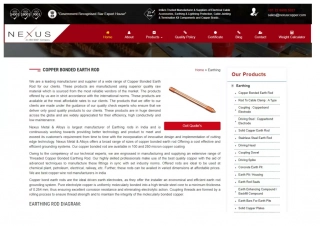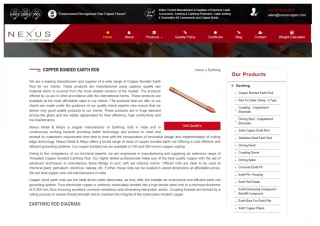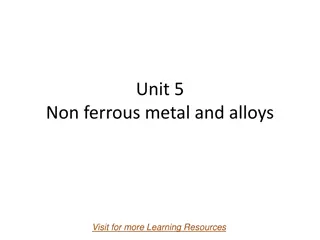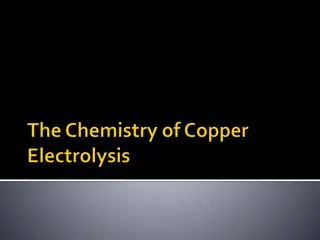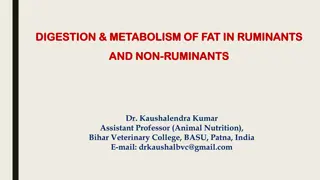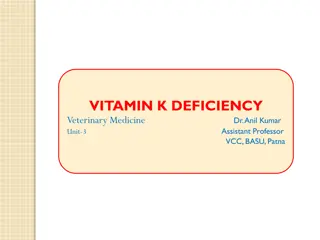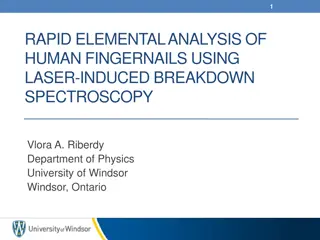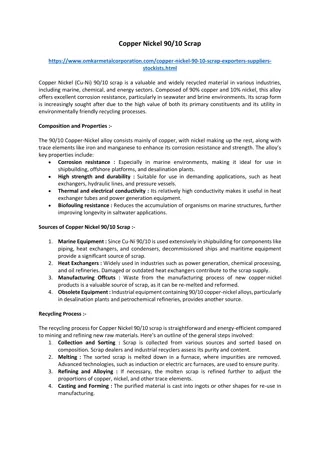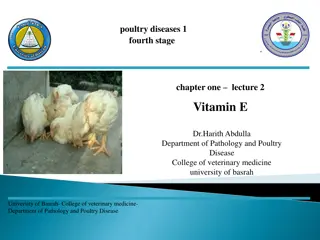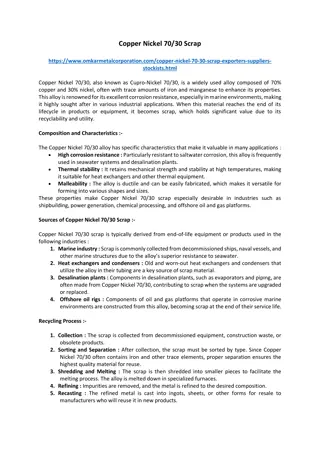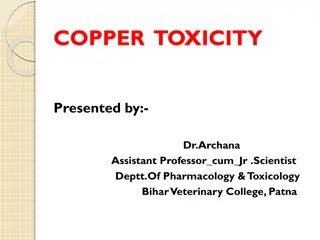Understanding Copper Deficiency in Ruminants
Copper deficiency in ruminants can be primary or secondary, affecting enzyme activity and gene expression. Risk factors include diet, soil characteristics, and breed. Pathogenesis involves effects on tissues, wool loss, body weight, diarrhea, anemia, bone health, and heart function.
Download Presentation

Please find below an Image/Link to download the presentation.
The content on the website is provided AS IS for your information and personal use only. It may not be sold, licensed, or shared on other websites without obtaining consent from the author. Download presentation by click this link. If you encounter any issues during the download, it is possible that the publisher has removed the file from their server.
E N D
Presentation Transcript
COPPER DEFICIENCY By Dr. Hussein AlNaji
ETIOLOGY 2 Copper (Cu) deficiency may be primary, when the intake in the diet is inadequate, or secondary ( conditioned ), when the dietary intake is sufficient but the absorption of copper and its utilization by tissues is impeded. A- Primary Copper Deficiency : The amount of Cu in the diet may be inadequate when the forage is grown on deficient soils, typically sandy or weathered soils, or soils in which the Cu is unavailable. B- Secondary Copper Deficiency This is the predominant deficiency; the amount of Cu in the diet is adequate, but other dietary factors (mainly molybdenum, sulfur, and iron, but also manganese and zinc) interfere with the availability and utilization of Cu.
3 Risk Factors Several factors influence the plasma and tissue concentrations of copper in ruminants, including the following: 1. Breed, age, and growth of animal. 2. Demands of pregnancy and lactation. 3. Dietary factors type of pasture or feed source, season. 4. Soil characteristics and concentration of minerals particularly Mo and sulfur, which can form thiomolybdates and reduce the availability of Cu by binding with it in the rumen or with biological compounds in the plasma and tissues.
PATHOGENESIS A- Effects on Tissues Copper is incorporated into and essential for the activity of many enzymes, cofactors, and reactive proteins.1 Some pivotal functions of major enzymes include cellular respiration (cytochrome oxidase), protection from oxidants (superoxide dismutase [SOD], ceruloplasmin), the transport of iron (ceruloplasmin [ferroxidase I] and hephestin [ferroxidase II]), conversion of tyrosine to melanin. B- Changes in Gene Expression Differences in the expression of genes associated with Cu metabolism including less duodenal Cu transporter 1 (Ctr1) and up-regulation of genes in the liver of Cu-deficient fetuses (antioxidant 1 [Atox1]).
C- Wool Loss of crimp causes stringy or steely wool with reduced tensile strength, This follows inadequate keratinization, probably as a result of imperfect oxidation of free thiol groups. D- Body Weight Poor growth is a feature of the later stages of Cu deficiency. E- Diarrhea The pathogenesis of diarrhea induced secondary Cu deficiency (peat scours, teart) is uncertain.
6 F- Anemia Anemia develops with severe or prolonged Cu deficiency and is associated with the role of Cu in the formation of hemoglobin. G- Bone The osteoporosis that occurs in some natural cases of Cu deficiency is caused by the depression of osteoblastic activity. H- Heart The myocardial degeneration of falling disease, now rarely seen, may be a terminal manifestation of anemic anoxia, or it may be a result of interference with tissue oxidation.
7 I- Connective Tissue Copper is a component of the enzyme lysyl oxidase, secreted by the cells involved in the synthesis of the elastin component of connective tissues, and has important functions in maintaining the integrity of tissues such as capillary beds, ligaments, and tendons. J- Blood Vessels K- Pancreas L- Nervous Tissue Copper deficiency halts the formation of myelin and causes demyelination in lambs, probably by a specific relationship between Cu and myelin sheaths.
8 Phases of Copper Deficiency The development of a deficiency can be divided into four phases : 1. Depletion 2. Deficiency (marginal). 3. Dysfunction. 4. Disease. During the depletion phase, there is loss of Cu from storage, principally liver storage, but the plasma concentrations of Cu remain constant.
9 With continued dietary deficiency the concentrations of Cu in the blood decline during the phase of marginal deficiency. However, it may be some time before the concentrations or activities of copper-containing enzymes in the tissues begin to decline, and it is not until this happens that the phase of dysfunction is reached. There may be a further lag before the changes in cellular function are manifested as clinical signs of disease.
CLINICAL FINDINGS 10 Cattle 1. Subclinical Hypocuprosis No clinical signs occur, plasma Cu is marginal (<9.0 mmol/L). 2. General Syndrome a. Primary Copper Deficiency causes. 1. Un thriftiness, decreased milk production, and anemia in adult cattle. 2. The coat becomes rough, and its color is affected, with red and black cattle changing to a bleached, rusty red. 3. In severely deficient states, which are now uncommon, calves grow poorly, and there is an increased tendency for bone fractures, particularly of the limbs and scapula. 4. Ataxia may occur after exercise, with a sudden loss of control of the hindlimbs and the animal falling or assuming a sitting posture and then returning to normal after rest.
11 B- Secondary Copper Deficiency Signs can be similar to primary Cu deficiency, although anemia is less common, probably as a result of the relatively better Cu status in secondary deficiency. C- Falling Disease The characteristic behavior in falling disease is for apparently healthy cows to throw up their heads, bellow, and fall. D- Peat Scours ( Teart ) 1. Persistent diarrhea, with watery, yellow green to black feces with an inoffensive odor, occurs soon after the cattle start grazing. 2. The hair coat is rough, with depigmentation manifested by reddening or gray flecking, especially around the eyes in black cattle.
12 E- Unthriftiness (Pine) of Calves 1. The earliest signs are a stiff gait and ill-thrift. 2. The epiphyses of the distal ends of the metacarpus and metatarsus may be enlarged and resemble the epiphysitis of rapidly growing calves deficient in vitamin D or calcium and phosphorus. 3. Progressive ill-thrift and emaciation progress and can lead to death in 4 to 5 months. 4. Gray hair occurs, especially around the eyes of black cattle, and diarrhea may occur in a few cases.
13 Sheep General Syndrome a. Primary Copper Deficiency 1. Abnormalities of the wool are the first, and often only, sign in areas of marginal deficiency. Fine wool loses its crimp and luster, assuming a straight, steely appearance. 2. Dark wool loses pigment to become gray or white, often in bands coinciding with the seasonal occurrence of Cu deficiency.
14 B- Swayback and Enzootic Ataxia in Lambs and Goat Kids 1. Swayback and enzootic ataxia have a lot in common, but there are subtle differences in their clinical signs and epidemiology. 2. Affected lambs are born dead or weak and are unable to stand and suckle. They have spastic paralysis, are more uncoordinated with erratic movements compared with enzootic ataxia, and are occasionally blind. 3. Progressive (delayed) spinal swayback is characterized by a stiff and staggery gait and hindlimb incoordination, and it appears at 3 to 6 weeks of age. 4. There is excessive flexion of joints, knuckling of the fetlocks, wobbling of the hindquarters, and finally falling. 5. The hindlegs are affected first, and the lamb may be able to drag itself about in a sitting posture.
15 CLINICAL PATHOLOGY 1. Herd Diagnosis. The diagnosis of copper deficiency in a herd is based on the collection and interpretation of the history, clinical examination of affected animals etc. 2. Treatment Response Trial. A comparison between a group of animals treated with Cu and a similar group not treated is often a cost-effective and desirable approach. 3. Copper Status of Herd or Flock. Necropsy findings 1. Demyelination in enzootic ataxia, anemia, emaciation. 2. Hemosiderosis, osteodystrophy, cardiomyopathy.
16 Differential diagnosis Copper deficiency must be differentiated from herd problems associated with the following: 1. Unthriftiness as a result of intestinal parasitism. 2. Malnutrition as a result of energy protein deficiency. 3. Lameness caused by osteodystrophy (calcium, phosphorus, and vitamin D imbalance). 4. Anemia as a result of sucking lice. 5. Neonatal ataxia in lambs (congenital swayback and enzootic ataxia) from border disease; cerebellar hypoplasia (daft lamb disease); hypothermia; meningitis. 6. Sudden death as a result of other causes.
17 TREATMENT The treatment of Cu deficiency is relatively simple, but if advanced lesions are already present in the nervous system or myocardium, complete recovery will not occur. 1. Oral dosing with 4 g of Cu sulfate for 2- to 6-month-old calves, or 8 to 10 g for mature cattle, given weekly for 3 to 5 weeks. 2. Parenteral injections of copper glycinate may also be used. If feasible, the diet of affected animals can also be supplemented with Cu. 3. Copper sulfate may be added to the mineral salt mix at 3% to 5% of the total mixture. 4. A commonly recommended mixture for cattle is 50% calcium phosphorus mineral supplement, 45% cobalt-iodized salt, and 3% to 5% Cu sulfate.
18 Thank You


